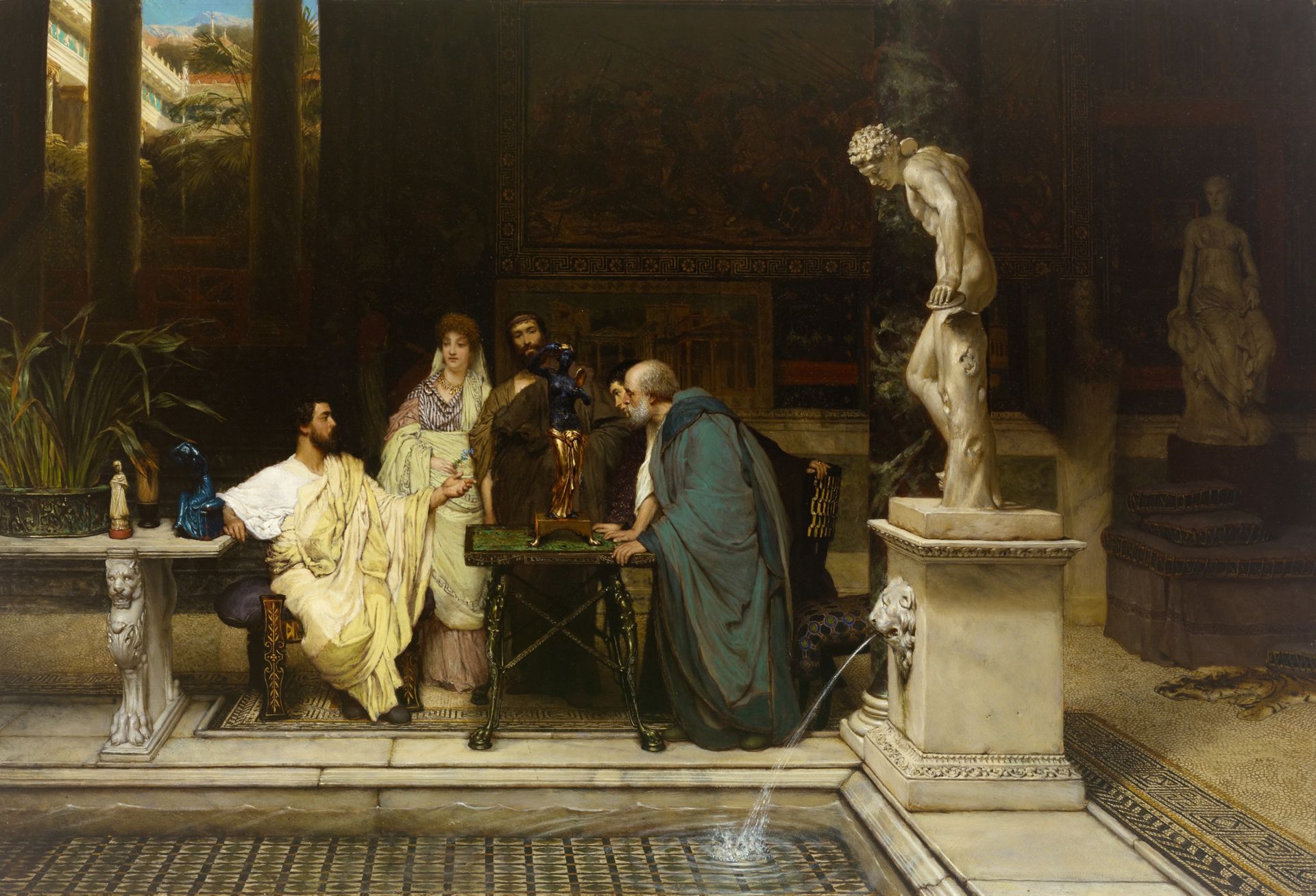Urban centres prompted innovations and gave rise to sculpture production and new refined techniques
On Tuesdays, researchers and students from all over the world tune in to UrbNet’s virtual lecture room to learn more about marble portraits, bronze statuettes and sculpture installations popular in the Roman Empire. UrbNet’s visiting professor Christopher H. Hallett guides the audience through the ancient sculptural landscape while presenting his new research.

Professor Christopher H. Hallett (University of California, Berkeley) is a leading expert on ancient marble sculpture, and his research within the visual culture of the ancient world has led him to explore related subjects such as Greek and Roman bronzeworking, nude portraiture, mummy portraits in Roman Egypt, Roman copies of Greek sculpture, and monumental sarcophagi. UrbNet has had the pleasure of having Christopher H. Hallett as a visiting professor since September 2020.
This semester, Hallett gives a series of six lectures in the UrbNet residential scholar lecture series. Three lectures have already been held with a high attendance, and wonderful discussions afterwards. Three more lectures are planned.
New research on the materials of ancient sculpture
The lecture series is called New research on the materials of ancient sculpture, and in the three first lectures Hallett explored developments in sculptural technique and in artistic taste in the urban centres of the Roman Empire, especially in Rome.
In the first lecture, we learned about the main-intended view of portrait sculpture – something that has not been highlighted to a great extent before. While the sculptures are in 3-D, there would be one or two preferred views, in which the asymmetrical ‘distorted’ features would click into place. Hallett also discussed the techniques used when working in bronze and marble, and he convincingly showed how marble outruns bronze as the favourite material in the last half of the second century AD. In this period portrait sculptors working in bronze start imitating the techniques developed for producing high-quality marble sculpture.
The second lecture revolved around bronze statuettes and the formation of art collections by members of the Roman elite. Termed ‘Corinthian bronzes’, exquisite bronze statuettes with elaborate inlay of precious metals and stones were a new category of collectable, created for the Roman art market from the early first century BC (see figure). Hallett also introduced written sources to explore how Roman collectors viewed these expensive acquisitions, and speculated that collectors in Rome might well have bought the statuettes believing they were masterpieces of the Classical period.
Bronze statuettes were also part of Hallett’s third lecture, in which he made connections between ‘Corinthian bronzes’ (as he has identified them), the Roman household gods (Lares), and other portable statuettes, such as hand-held miniature cult images and processional statuettes. He discussed the representation in Roman visual culture of these different types of statuettes, focusing on the little bronze bases that go together with the figures, and which render them portable. He further argued that worshipping the Lares in the form of bronze statuettes was inspired by the fashion for owning ‘Corinthian bronzes’ among the Roman elite.
The last three lectures will take the audience to the centre of Rome, where aspects of Caesar’s and Augustus’ building programmes in the eternal city will be highlighted. Among other things, we will hear about sacred groves, wooden cult images, and the first imperial forum.
Sign up
It is not too late to sign up for the last three lectures. You will find the sign-up page here: https://events.au.dk/hallett
Programme for the rest of the lecture series
4 May 2021, 13:00–14:00 (time zone CEST)
Lecture 4/6: The Wood Comes to the City: Ancient Trees, Sacred Groves, and the "Greening" of Early Augustan Rome
18 May 2021, 13:00–14:00 (time zone CEST)
1 June 2021, 13:00–14:00 (time zone CEST)
Lecture 6/6: Julius Caesar as second founder of Rome and the evolution of the first Imperial Forum, joint lecture with Prof. Rubina Raja.
Christopher Hallett
For more information on visiting professor Christopher Hallett, visit the website https://urbnet.au.dk/visitors/residential-scholars-visiting-professors/2021/?
